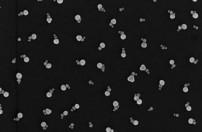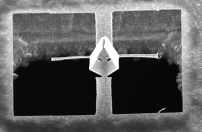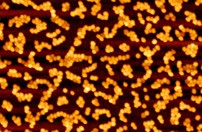Optics
Current
Automatically assembling nanolenses
A team of researchers has created a scalable production method for a class of nanoscale lenses using the electrostatic forces between charged nanoparticles, enabling wider application of the technology.
Read more...Ultrathin holograms open doors to 3D displays
A team from RMIT University and Beijing Institute of Technology have fabricated the world’s thinnest hologram – and it could revolutionise the way we interact with everyday technologies.
Read more...Folding plasmene nanosheets
Professor Wenlong Cheng has been investigating how to make an unusual class of materials with exotic properties and unprecedented real-world applications.
Read more...Twisting light for faster internet
With the advent of fibre optic networks the bandwidth of the internet increased dramatically. To decrease bottlenecks in next-generation internet speeds, current electronic switches are being replaced with optical equivalents.
Read more...Nanoscale optical circuits for light-speed information processing
The speed of the internet is largely reliant upon optical fibres which carry information, and the electronic devices used to encrypt and decrypt. This project looks at creating optical circuits smaller than the wavelength of light, to provide extremely high processing speeds.
Read more...Metal nanoparticles lead the way towards solar water decontamination
It has long been known that solar energy can be used to create electricity for heating and lighting. However, it can be also used to drive important chemical transformations such as the creation of low-cost water purification for developing countries.
Read more...Black silicon sensors for molecular contamination
Black silicon provides a unique platform for a non-reflecting, all-direction-absorbing surface, which can be used for sensing and fingerprinting of molecular and microbial contamination. This is done by sensing the light scattered in air, water, food, body fluids by various compounds.
Read more...Ultra-thin optical sensors for the detection of toxic chemicals
Current chemical sensors pose a variety of inhibitors to their use such as cost, portability and reproduceability. Development of a new, ultra-thin, 2D optical material enables the rapid, sensitive and inexpensive detection of toxic chemicals in air, water and soil.
Read more...Archive
Thinner, faster electronics and data transfer devices
Research into two dimensional, atomically thin materials such as Graphene, is opening the doors for a new generation of electronics that are thinner, faster and more robust than ever before.
Read more...Nanoscale antennas the future of telecommunications
Researchers from the University of Melbourne and CSIRO have developed nanometer sized optical antenna based on every-day radio frequency designs. The novel designs are focused enhancing radiation from a single photon emitter.
Read more...Self-assembling gold nanorods show huge potential
Nanostructures fabricated with metal nanoparticles hold great promise for applications in biosensing, optical analysis, computing and solar energy conversion. One approach looks at programming the spontaneous self-assembly of nanoparticles into the desired architecture.
Read more...Detecting chirality of biological molecules
Many biological molecules are chiral, meaning that they come in left-handed and right-handed forms even though they are chemically identical. Detecting these forms is important as their handedness affects their interactions.
Read more...SEM images of high accuracy nanostructures
In this project a set of processes were developed to fabricate nano-scale metal structures in order to study their interaction with visible light. The ultimate goal is to incorporate these structures into all-optical signal-processing devices.
Read more...Enhancing sensing applications
In sensing applications, it is necessary to create strong light field enhancement on a nanoscale. The challenge is to increase the light field enhancement, which is limited by the “sharpness” of the edges and corners of nanoparticles and is linked to fabrication resolution.
Read more...Vertical arrays of gold nanorods achieved
Fabrication of novel self-assembling metallic nanostructures shows great potential for applications in biosensing, optical analysis, computing and solar energy conversion.
Read more...Manipulating hot spots to increase biosensor sensitivity
Through the characterisation of gold nanoparticle surface assemblies and the manipulation of their electric field hot spots, researchers at MCN and Monash University are looking to increase the sensitivity of biosensors.
Read more...Photonic circuitry from the noble metals
Researchers from MCN and Monash University are collaborating to fabricate linear arrays of nanocrystals using the Focused Ion Beam-Scanning Electron Microscope.
Read more...

















